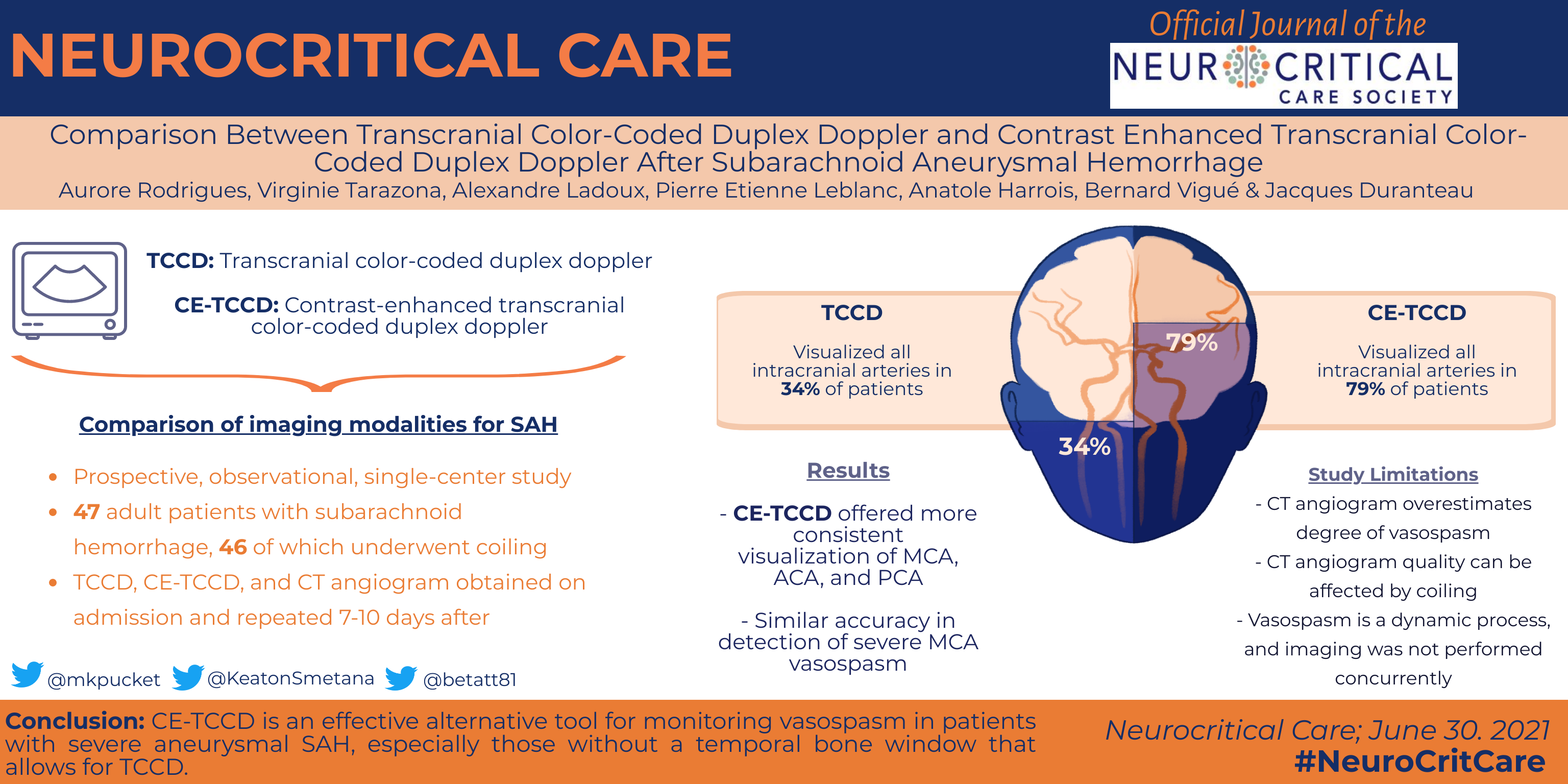By: Aurore Rodrigues, Virginie Tarazona, Alexandre Ladoux, Pierre Etienne Leblanc, Anatole Harrois, Bernard Vigué & Jacques Duranteau
First Online: 30 June 2021

Background
Transcranial color-coded duplex Doppler (TCCD) is commonly used to detect and monitor vasospasm in subarachnoid aneurysmal hemorrhage (aSAH). However, contrast enhanced TCCD (CE-TCCD) may be more effective. The objective of this study was to compare the accuracy of TCCD and CE-TCCD in the detection of vasospasm.
Methods
This study was a prospective comparison of TCCD and CE-TCCD for the detection of vasospasm, using computed tomography angiography (CT Angio) as a reference examination. The setting was the Department of Anesthesiology and Intensive Care at the Bicêtre University Hospital in Le Kremlin Bicêtre, France. TCCD and CE-TCCD were performed in 47 patients admitted to the intensive care unit (ICU) following aSAH over a 7-month period. TCCD and CE-TCCD were performed at ICU admission and between days 7 and 10. We aimed to visualize the seven intracranial arteries of the circle of Willis. Vasospasm diagnosis was assessed by CT Angio and graded as moderate when the percentage change in arterial diameter since admission was between 25 and 50% or as severe when the percentage change was greater than 50%.
Read the full article